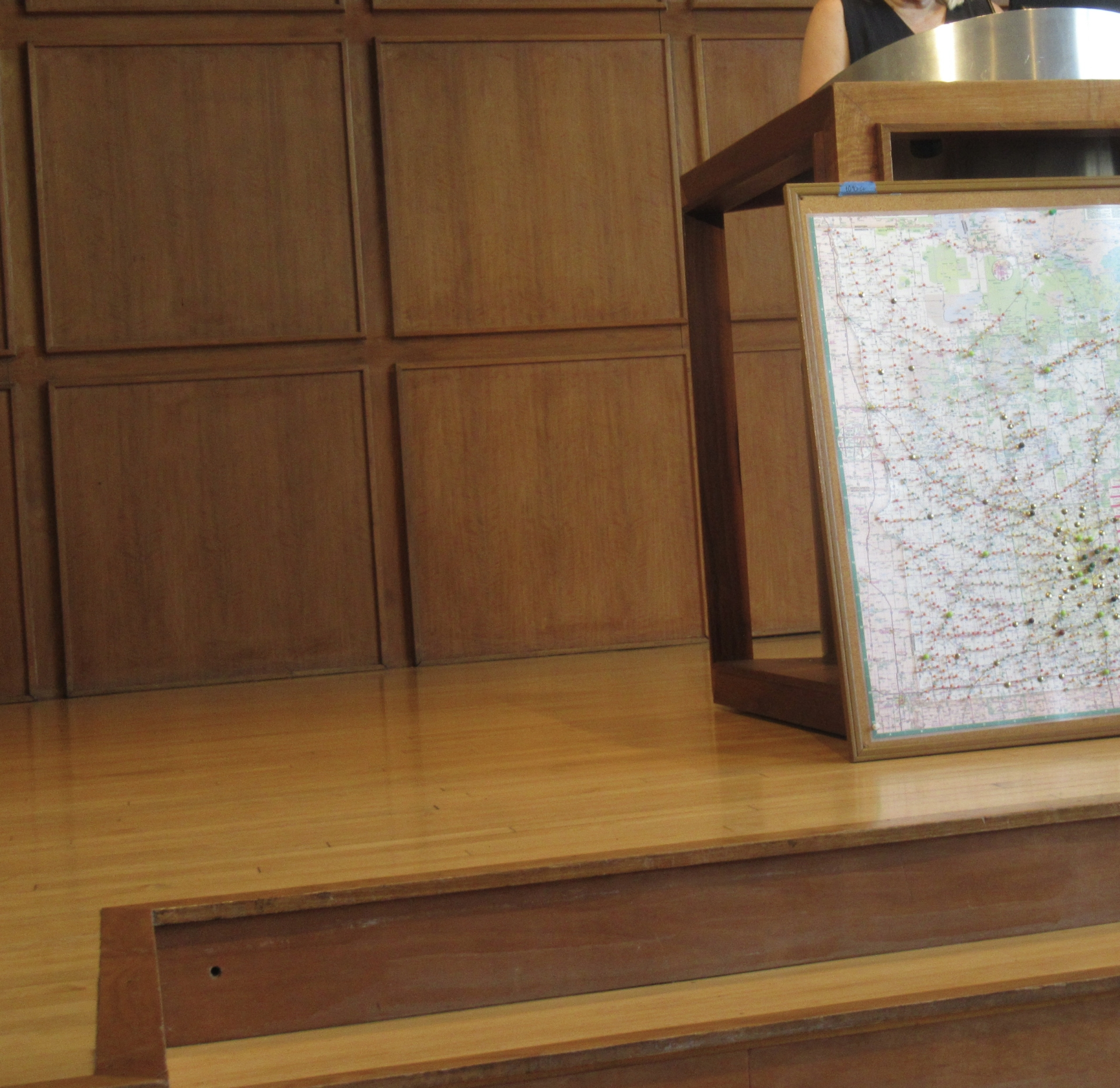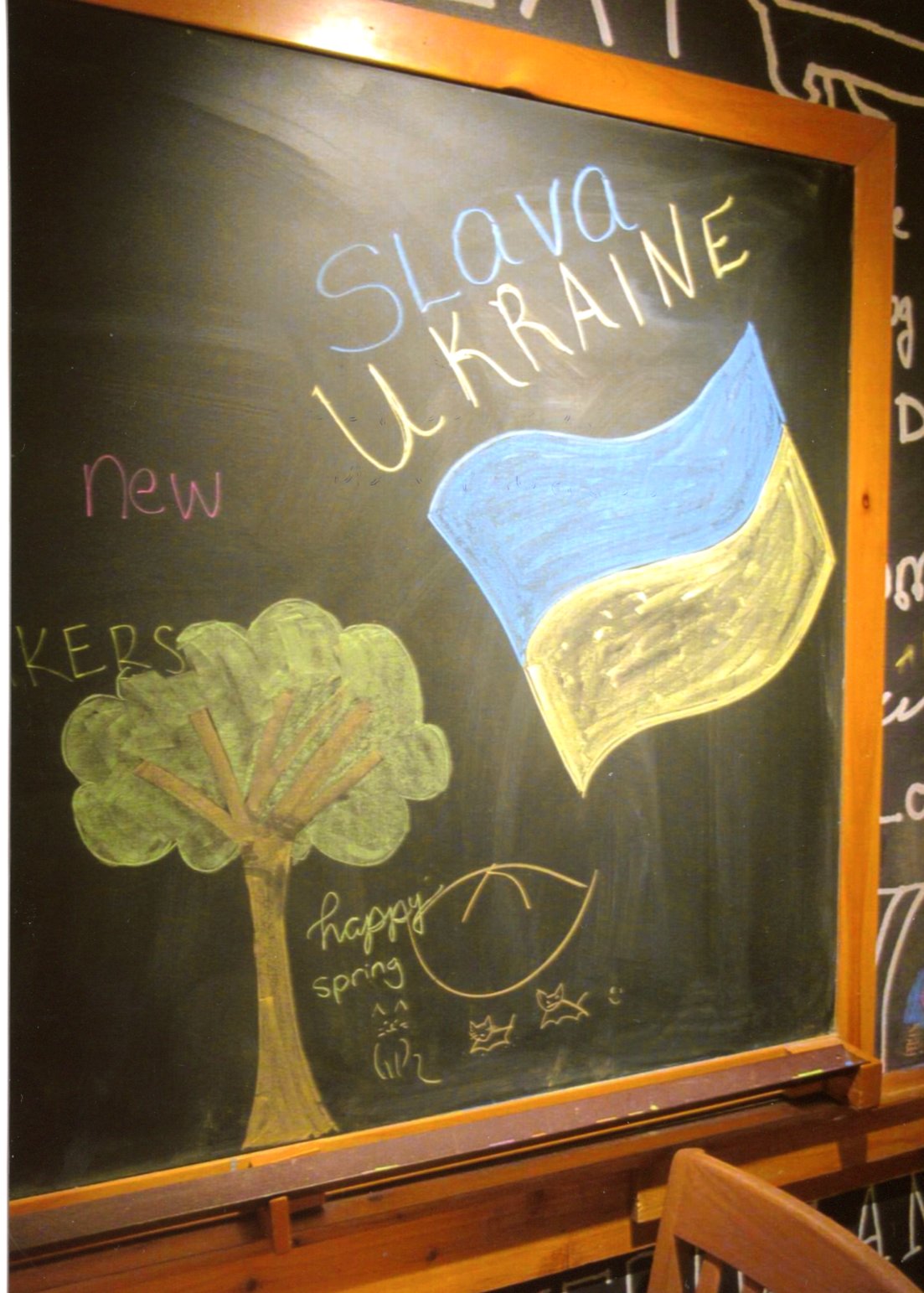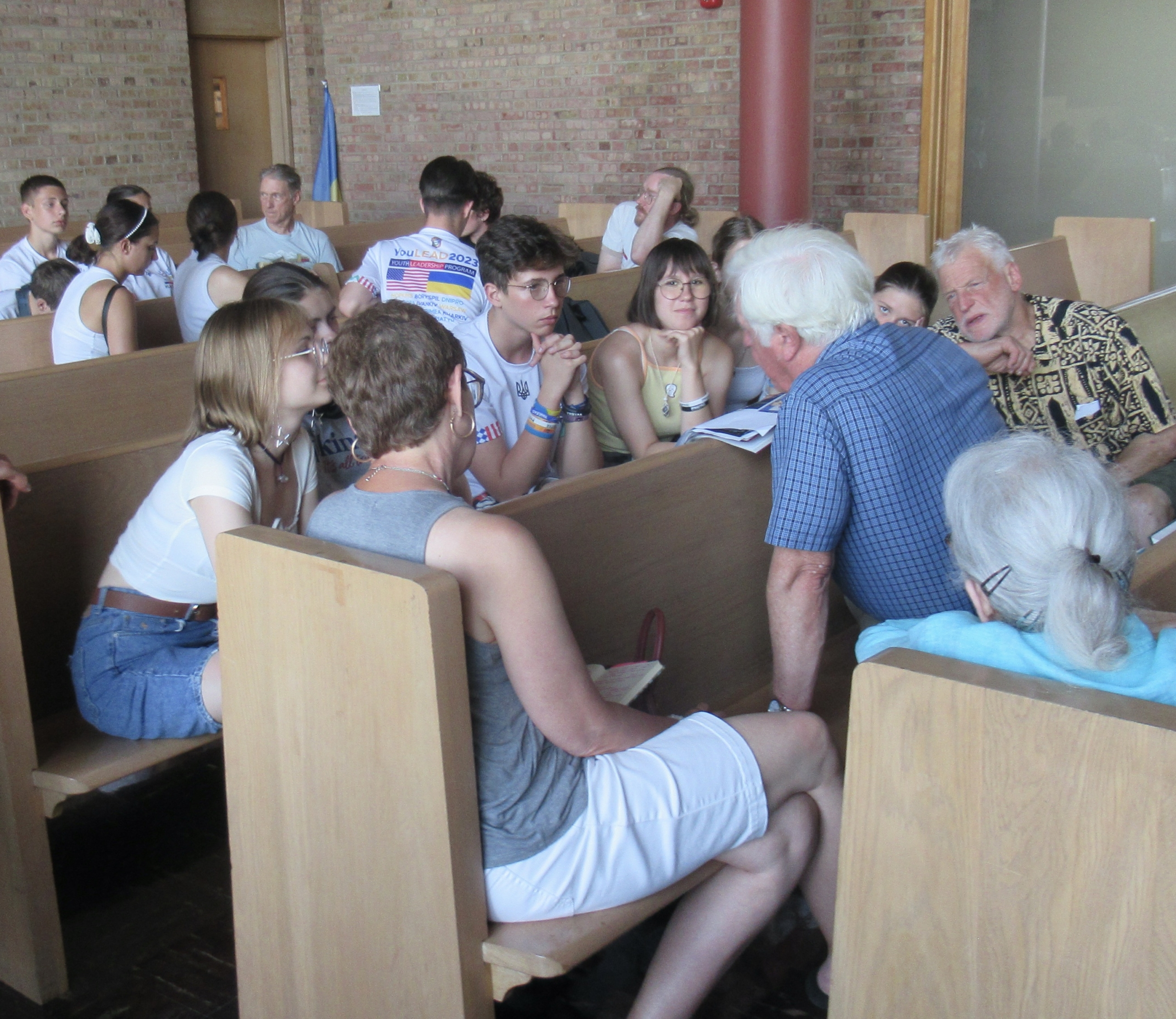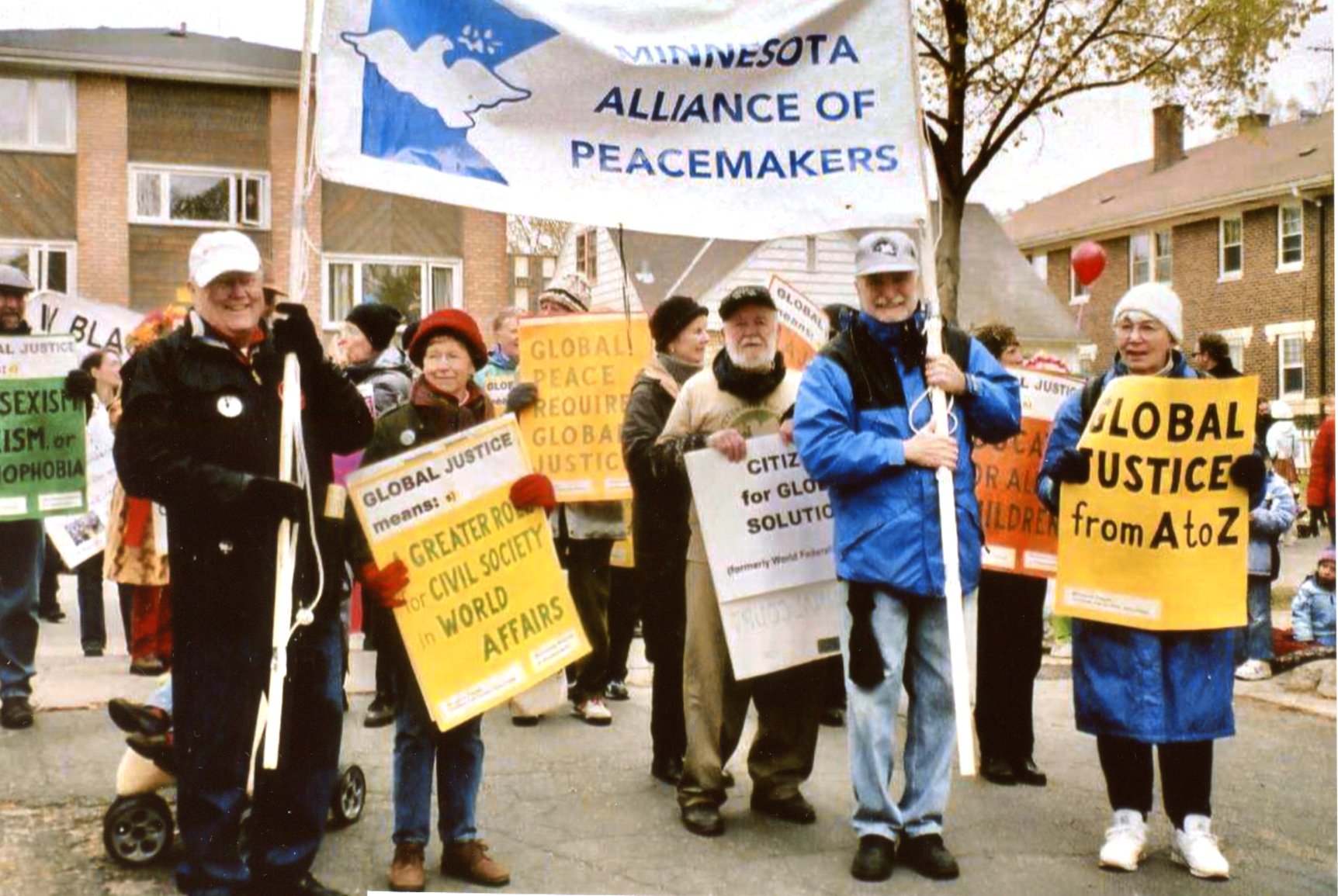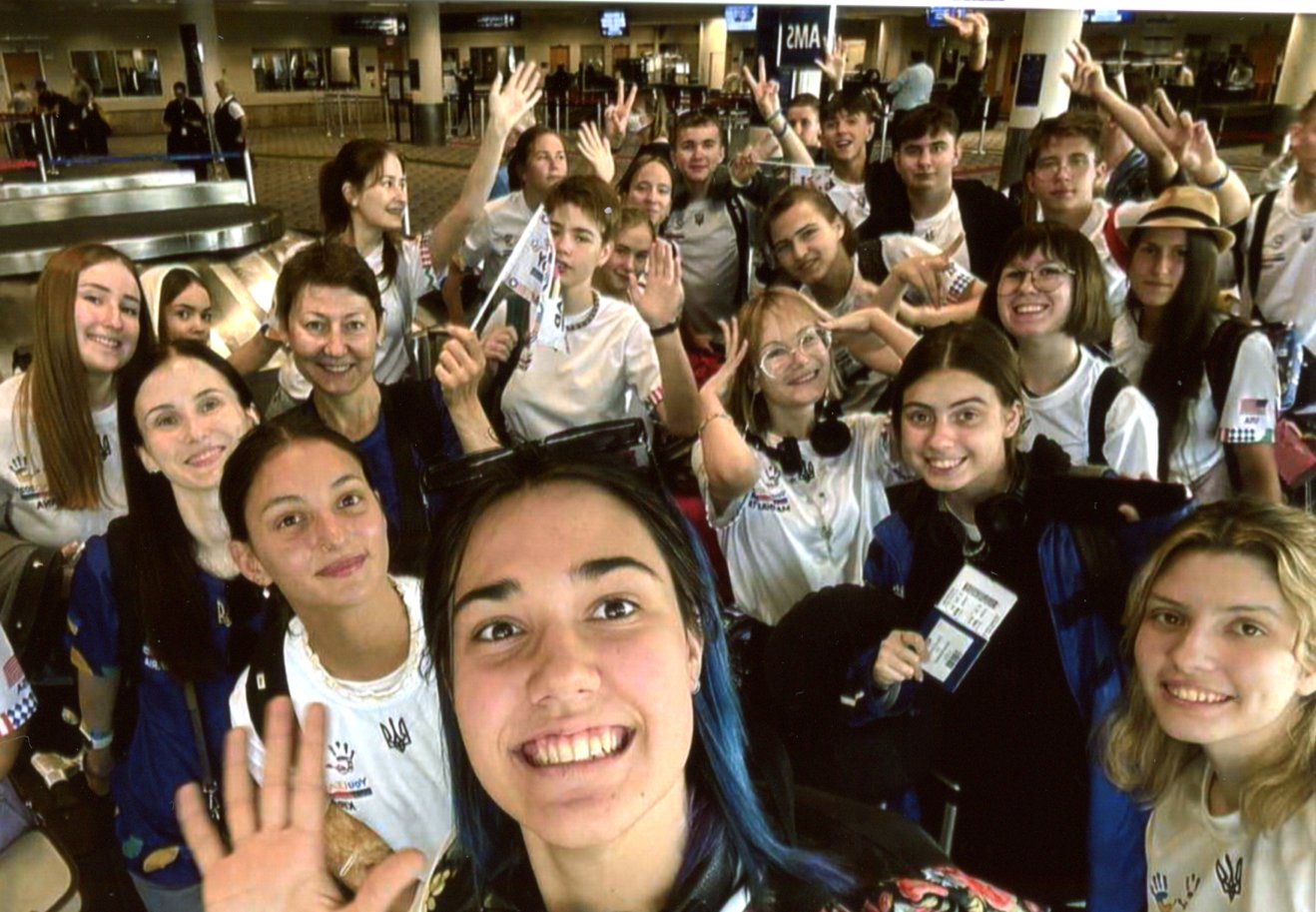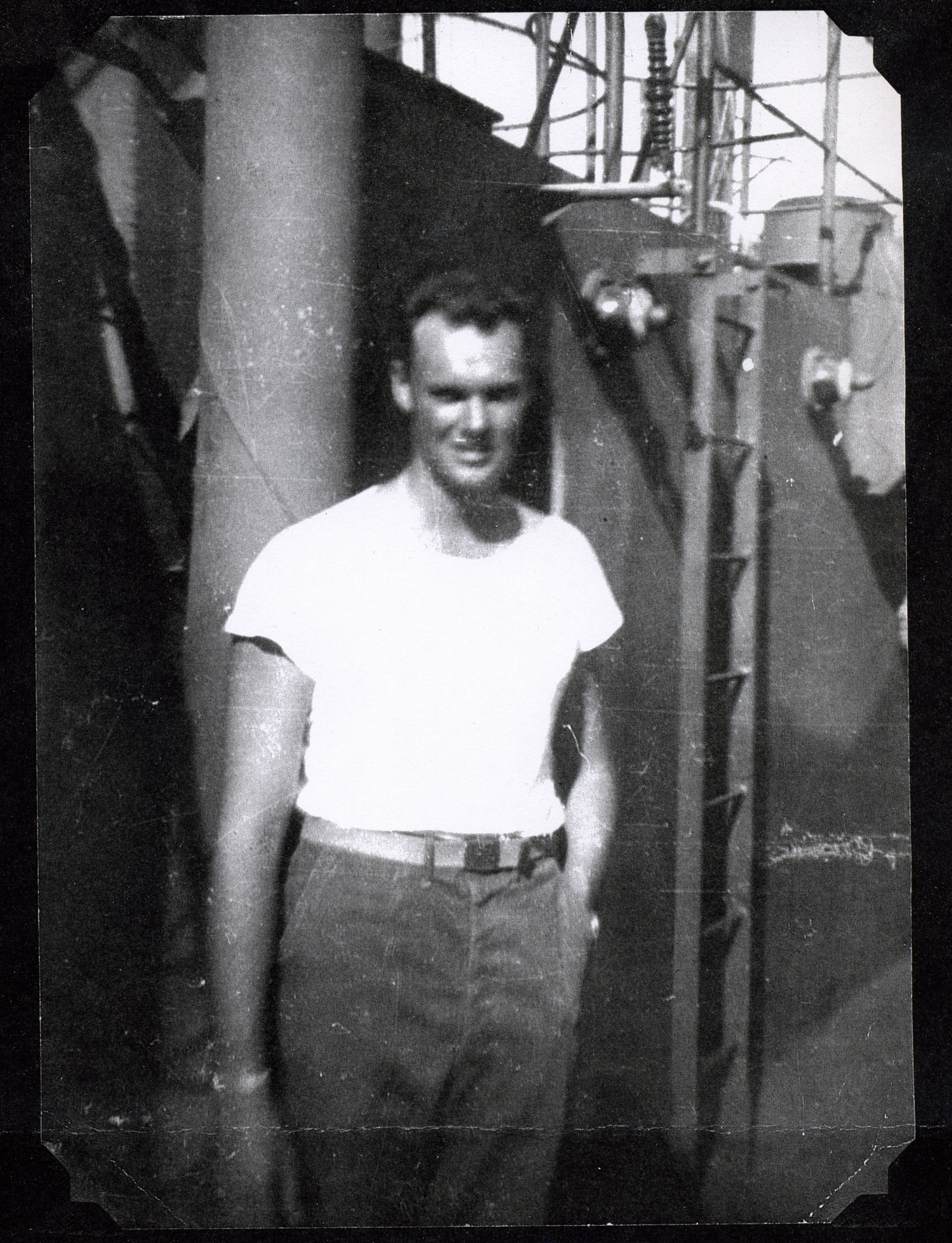Sunday, August 6, is the 78th anniversary of Hiroshima and the Atom bomb. Three days later, Nagasaki was target for the second bomb. The annual commemoration events are August 5, 6 and 8 in Minneapolis and St. Paul: details here, (click on first tab under news and events).
A year ago, I saw the Golden Rule sailboat as it prepared to begin its major sail in eastern U.S., starting at Hudson Wi and thence St. Paul and down the Mississippi River and on…. Golden Rules focus is nuclear. It is on the homestretch with a few months to go, and this commentary is very interesting. The Golden Rule’s presence on the web is here.
*
Onward: Today’s post emphasizes a three page letter, written August 10, 1945, the day after the second Atomic bomb exploded over Nagasaki, Japan.
Oppenheimer, the post which preceded this, as well as what follows, are invitations to broaden the conversation about the past, and to encourage discussion about our role in the matter of not only the past, but the future. We all are the future – in a democracy, the people decide who represents them, for good or ill.
As you’ll note, the linked letter, written August 10, 1945, was postmarked August 17, 1945, from a U.S. Marine officer to my Uncle George, a Navy officer, 1943-45, on the Destroyer USS Woodworth, DD460, in the Pacific theatre. The writer was George’s cousin, born the same year, 1916, only a mile away, on a neighboring farm near Berlin, North Dakota.
Both men were my relatives; George was my mothers younger brother.
*
I invite you to take the time to read and reflect on Gus’s three page letter.
Gus’s letter was written in wartime. The second A-Bomb had been dropped the previous day. The suggestion in the letter is that both men were in approximately the same location, quite certainly on, and near, Okinawa, Japan. Everyone was under wartime censorship rules, so things like exact locations were off limits in communications. Here’s part of a postwar map drawn by someone that most certainly places the Woodworth and George Busch near Okinawa Woodworth WWII (partial).
The letter was likely written on Okinawa, part of soon to surrender Japan, perhaps 500 miles from Nagasaki. You’ll notice that Gus does not say a single word about the Bomb, and as a Captain, he would have known about the Bombs.
I don’t know why Gus wrote as he did, one day after Nagasaki. What I do know is that Okinawa was one of the last and bloodiest battles of WWII – Okinawa Apr Jun 1945 – ending about a month before the Atom bomb was dropped on Hiroshima; and before Japan’s surrender. There were tens of thousands of casualties on both sides. Quite literally, Okinawa was a fight to the death.
I know that Gus’s Second Marine Division had endured a long, long war in the Pacific, and Gus was doubtless involved in the entirety of it. He received, in fact, a field promotion to Captain, indicating a strong service record. Being Captain of a combat Company was extremely high risk.
*
THOUGHTS: What Gus’s letter, and the letter from George Busch’s wife, Jean, in the previous post, bring to the conversation is how real people were reacting to news of any sort relating to World War II in the summer of 1945.
I am primarily interested in how we in the present day can apply learnings from previous crises, such as the A-bomb, and apply them as much as possible to resolving contemporary problems impacting on our society – everyone, everywhere. I articulated some of these in the Oppenheimer post last Friday.
I have always been rooted in the notion that Peace and Community are the objectives if we intend to survive as a planet. I believe that a majority – probably a vast majority – of humans share this belief. This flows from simple day to day observation of citizens in many contexts in action around me.
On the other hand, there has always been, and there will always be, everywhere, a minority and opposing notion, lusting for domination and control. No society is immune, certainly not our own in the present day. Yesterday’s Minneapolis Star Tribune on my doorstep articulates this well. We all know we are living in a society at war with each other.
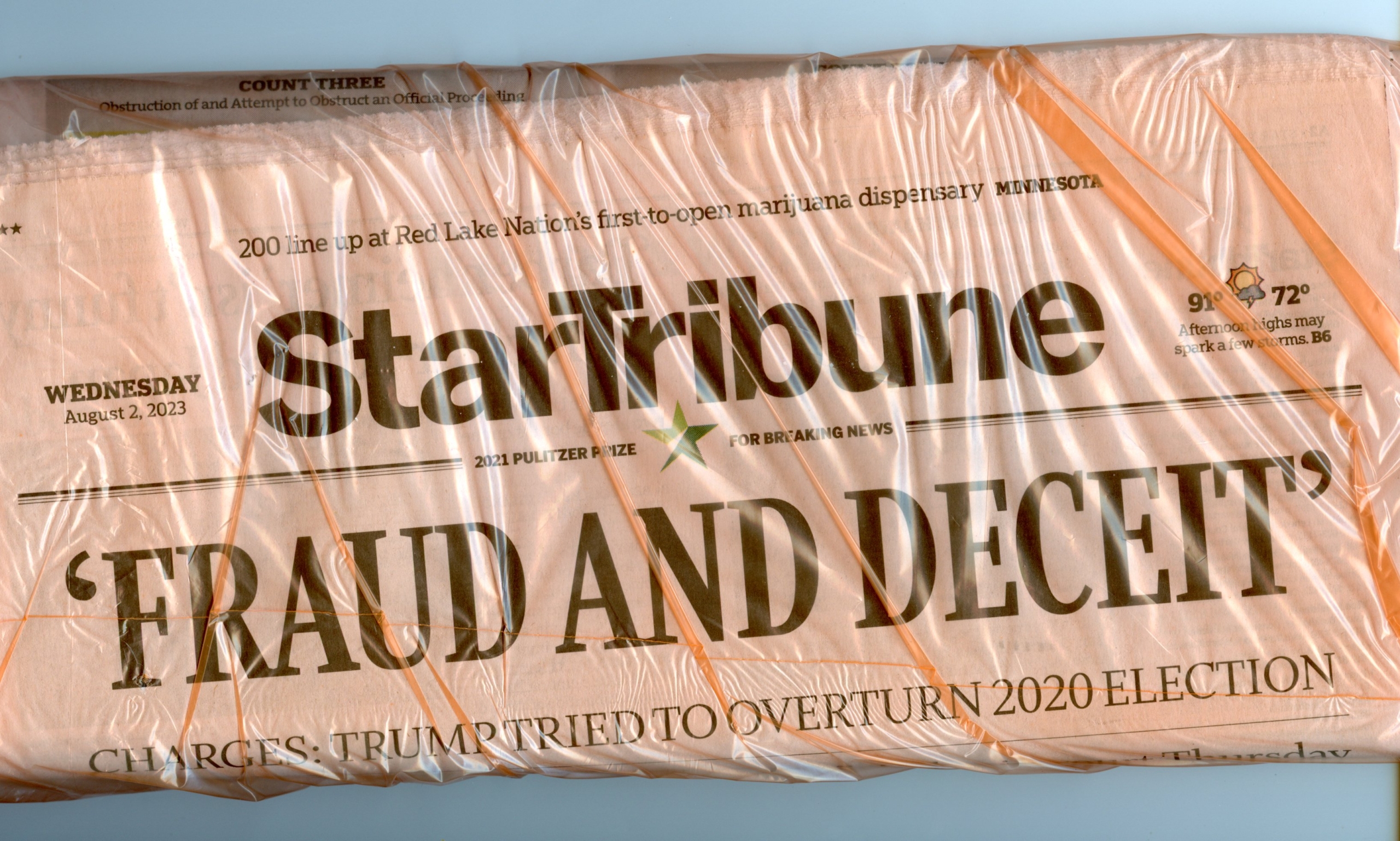
But there is a counterpoint: another Star Tribune, March 30, 1971, illustrated another view in an editorial, saved by my friend, mentor and peace activist Lynn Elling:
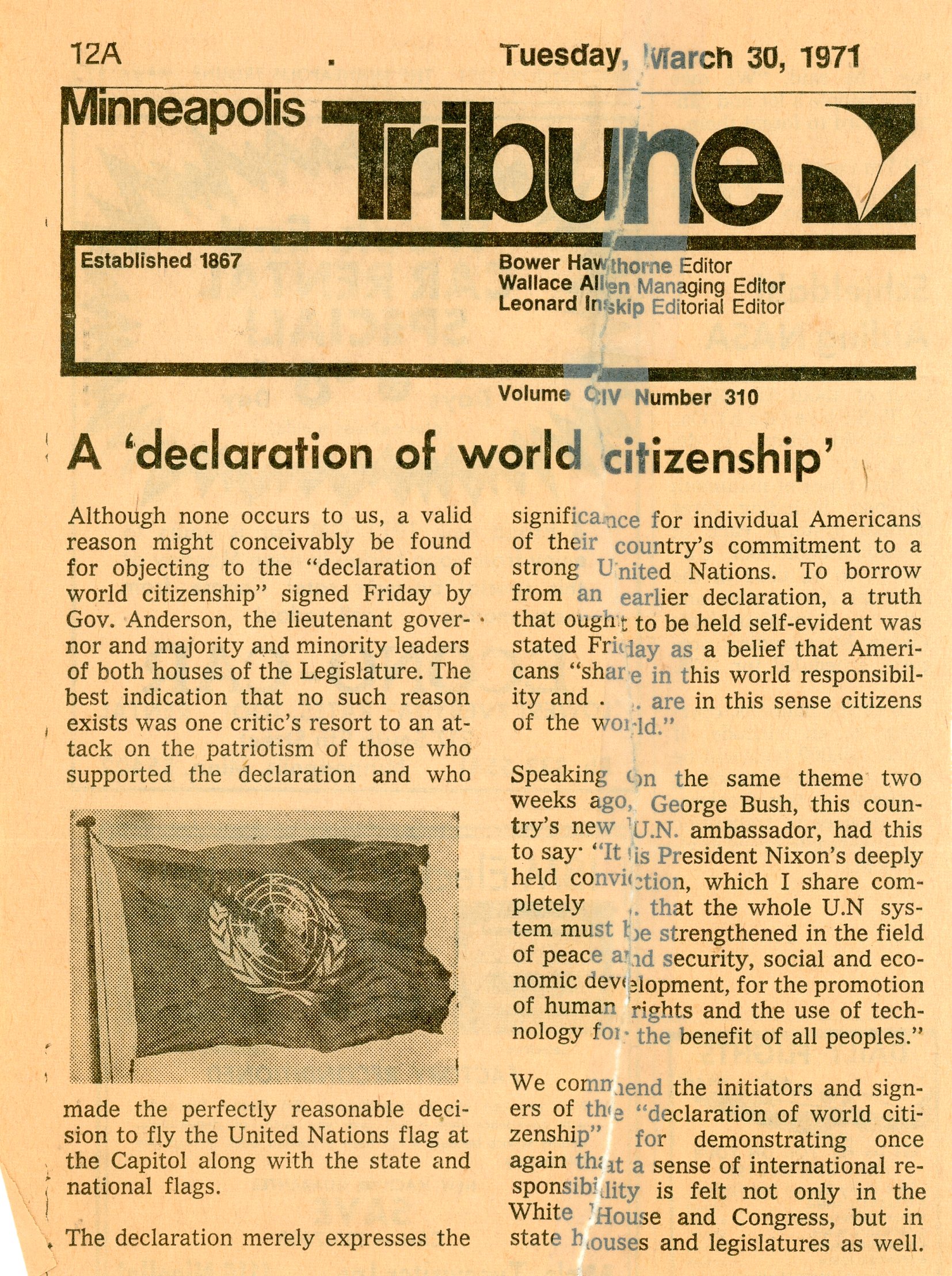
Herein lies the dilemma for peace and justice activists. Passivity does not accomplish the desired results. Neither does isolation within a community solely of like minds. Positive engagement with others and patience and persistence will always be essential, and will always be difficult.
The route to success – a peaceful planet – is difficult, but not impossible. We have to be “on the court” (participants) and not simply “in the stands” (spectators and commentators). We all can do our part.
To paraphrase the well known saying, if we can’t learn from the past, we are condemned to repeat it. Our enemy may or may not be the latest threat of use of a nuclear weapon, or; rather as I suggest in the previous post, it might be inaction on climate, communicable disease, the Pandemic, of dishonesty in communication, on and on.
Commemorate the tragic events of 1945 forever, but dedicate our efforts on saving our current world for future generations.
Individually and collectively we are the only ones who can change the conversation.
POSTNOTE: I began the post on Oppenheimer with a photograph of the blackboard at my coffee place, Caribou in City Centre. I looked again this morning. The tally now is 60-37, in favor of Barbie. But of even more interest to me was somebodies chalk rendition of what I think is supposed to be the Bomb. And I close with this illustration.
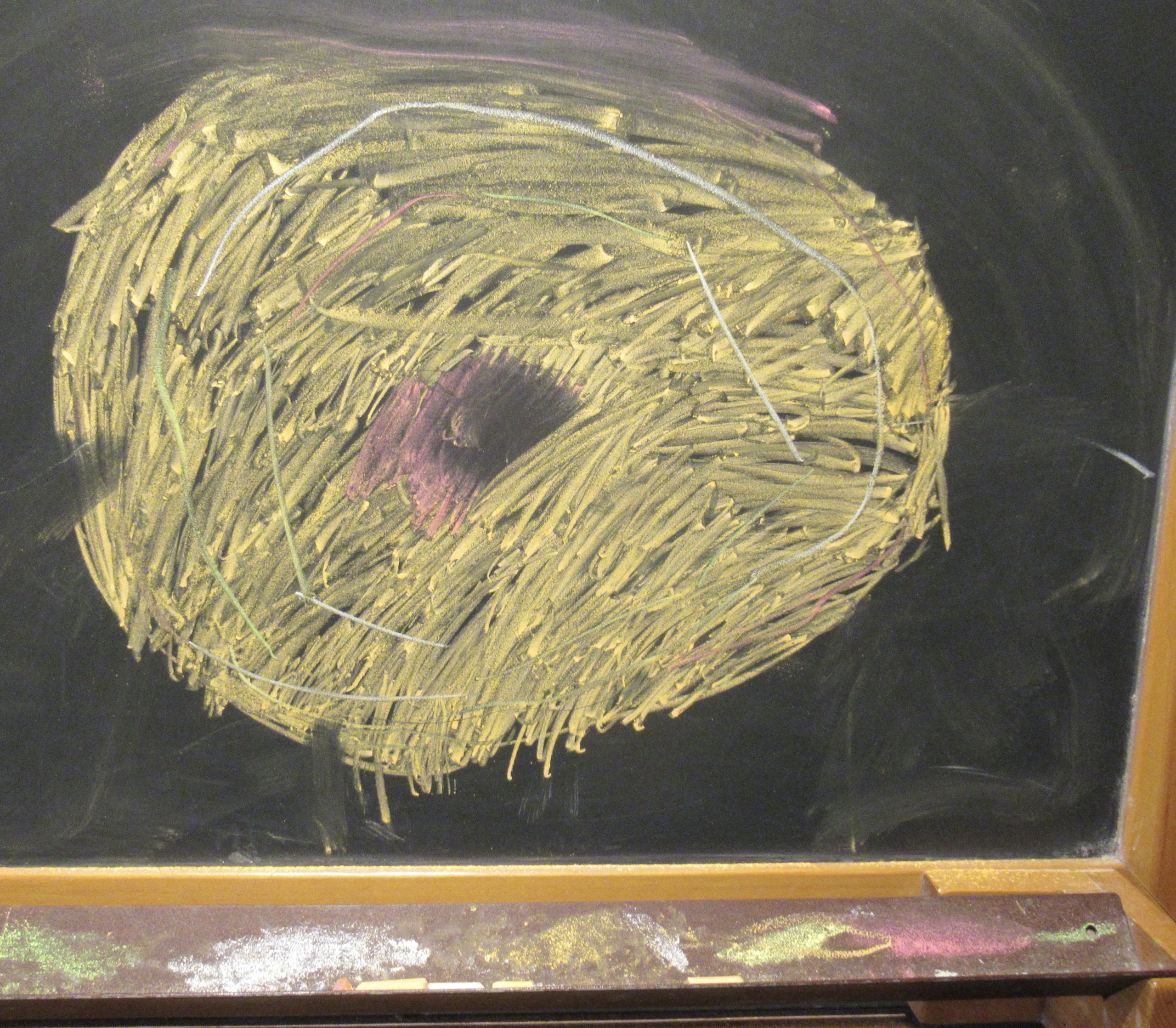
COMMENTS:
from Joyce: What a treasure this letter is, a true slice of history, and how sad that the art of letter writing is pretty much lost. One of my dearest friends was diagnosed with lung cancer a few months ago, and she is afraid she will die before her one year old granddaughter is old enough to remember her. We’re meeting up for lunch next week, and I’m going to suggest that she write letters to her granddaughter; my older daughter still has a bundle of letters that her grandmother sent her.
from JoAnn: Thanks for promoting the Hiroshima Nagasaki commemoration events. I hope to see you at one or more of them. John LaForge is a well-known activist (keynote on the 6th) and Sansei Yonsei Kai will be dressed in their kimonos to dance on the labyrinth on the 8th.
Thank you for sharing the historic letters. Very interesting reading, making we wonder what my parents felt (my mom was a WAC, stateside, but I think my dad may have been working for the Norwegian? navy. undercover).
My own understanding, and one of the main forces propelling my activism, is the fact that the development of the atomic bomb changed the world. One or two madmen could press a trigger and destroy life as we know it. Humankind now had a tool that could decimate not just people, but also animals and farmland, on a global scale. The air unfit to breathe, nuclear winter (talk about climate change!), cancer causing debris in the water as well as land. The other major force is the plight of the people affected by the bombing, “what has happened to me must never happen to you” — a plea from the hibakusha (abomb survivors).
I am indeed a faithful reader of your blog. Thank you for sharing your thoughts.
from Fred: As always, I enjoyed your comments and insights! As a student of WW2 throughout my life, I was particularly interested in your Uncle George, aboard a destroyer off Okinawa in 1945. Don’t remember hearing you note that particular combat officer.
So you had an uncle killed at Pearl Harbor on the day war began and another uncle involved in the concluding naval battle of the war, fought off Okinawa. I would venture that not many American families can make such a claim. Okinawa is most remembered as brutal struggle on land and the onslaught of Japanese Kamikazes attacks against the USN invasion fleet. But the fighting in waters surrounding the island turned out to be last stand of the Japanese.
Operation Haven Number One, entrusted the Surface Special Attack Forces, led by the super battlewagon Yamato, to destroy the American fleet. That force was stopped by Naval aviators from US carriers.
Special note: Are you aware of the Battle off Samar (in the Philippines)? Long story short, Halsey went off on a wild goose chase set up by the Japanese, leaving a fleet of transport ships vulnerable. They were protected only by several Jeep (light) carriers and destroyers. Japanese fleets rushed in for the kill while their aircraft doggedly pursued surface ships.
The Americans were totally surprised and caught on only when they saw the Japanese fleet bearing down on them. American Destroyers were ordered to charge battleships, cruisers and destroyers in what seemed a suicidal attack. If you have never read Hornfischer’s The Last Stand of the Tin Can Sailors, I’ll lend you my copy. That battle has been called the US Navy’s finest hour.
Finally, Diane and I made an interesting trip to Asia in 2006. We wanted to return to see what China was like after our lengthy visit there in 1988. After several days in Beijing, we boarded a cruise ship that visited Manchuria, South Korea, Taiwan, Okinawa, and Osaka, Japan (saw its museum honoring Kamikaze pilots). It was all terrific, but the stop at Okinawa and a day ashore the most memorable.
response from Dick: Tularosa NM, subject of the article, is about 60 miles from Trinity site and adversely affected by fallout after the nuclear test in 1945. The article speaks for itself.
Of course, the creators of the Atomic Bomb didn’t know, until its detonation, exactly what would happen. It had never been done before. In a sense, it was like any invention at any time in history: its benefits and its consequences were not reliably predictable at the beginning, and included the possibility that all living things everywhere would have been obliterated by the first explosion.
from David: Here is a story from American Heritage online magazine. It’s from a special issue, “Hiroshima and the Struggle to End the War.” It just arrived in my inbox and I’ve only had a chance to skim through it and thought I’d send it along to you.
